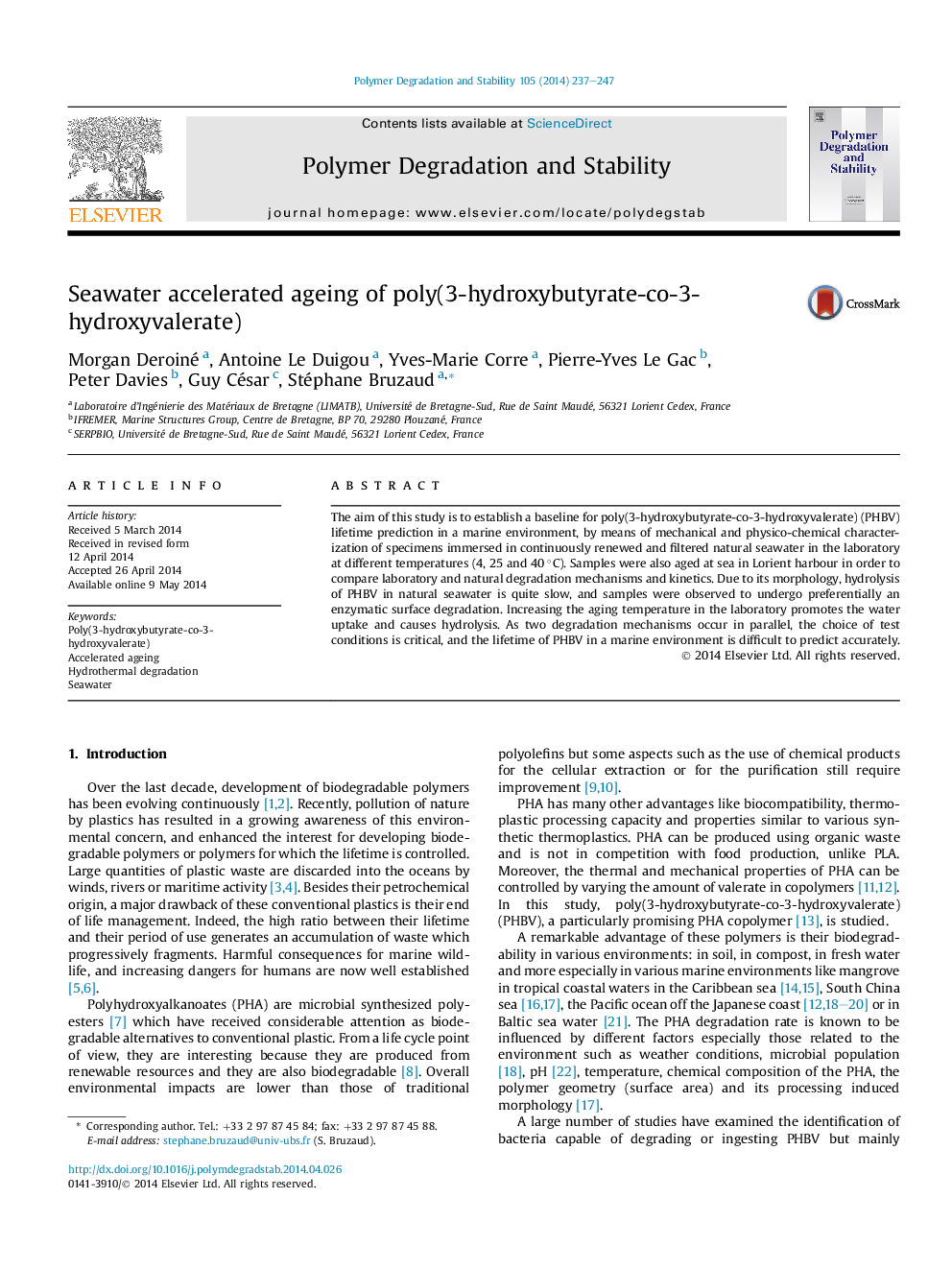| Article ID | Journal | Published Year | Pages | File Type |
|---|---|---|---|---|
| 5201898 | Polymer Degradation and Stability | 2014 | 11 Pages |
Abstract
The aim of this study is to establish a baseline for poly(3-hydroxybutyrate-co-3-hydroxyvalerate) (PHBV) lifetime prediction in a marine environment, by means of mechanical and physico-chemical characterization of specimens immersed in continuously renewed and filtered natural seawater in the laboratory at different temperatures (4, 25 and 40 °C). Samples were also aged at sea in Lorient harbour in order to compare laboratory and natural degradation mechanisms and kinetics. Due to its morphology, hydrolysis of PHBV in natural seawater is quite slow, and samples were observed to undergo preferentially an enzymatic surface degradation. Increasing the aging temperature in the laboratory promotes the water uptake and causes hydrolysis. As two degradation mechanisms occur in parallel, the choice of test conditions is critical, and the lifetime of PHBV in a marine environment is difficult to predict accurately.
Keywords
Related Topics
Physical Sciences and Engineering
Chemistry
Organic Chemistry
Authors
Morgan Deroiné, Antoine Le Duigou, Yves-Marie Corre, Pierre-Yves Le Gac, Peter Davies, Guy César, Stéphane Bruzaud,
